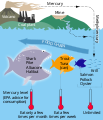Attēls:MercuryFoodChain.svg

Size of this PNG preview of this SVG file: 512 × 596 pikseļi. Citi izmēri: 206 × 240 pikseļi | 412 × 480 pikseļi | 660 × 768 pikseļi | 880 × 1 024 pikseļi | 1 759 × 2 048 pikseļi.
Sākotnējais fails (SVG fails, definētais izmērs 512 × 596 pikseļi, faila izmērs: 54 KB)
Faila hronoloģija
Uzklikšķini uz datums/laiks kolonnā esošās saites, lai apskatītos, kā šis fails izskatījās tad.
| Datums/Laiks | Attēls | Izmēri | Dalībnieks | Komentārs | |
|---|---|---|---|---|---|
| tagadējais | 2022. gada 13. decembris, plkst. 02.20 |  | 512 × 596 (54 KB) | YitzhakNat | change to compatible font - noto sans; ̟ shadow and position of text centered in some places |
| 2016. gada 26. aprīlis, plkst. 11.57 |  | 512 × 596 (33 KB) | Sertion | Removing a weird image in the svg. | |
| 2016. gada 26. aprīlis, plkst. 11.54 |  | 512 × 596 (39 KB) | Sertion | Viewbox instead of with/height | |
| 2016. gada 19. marts, plkst. 01.24 |  | 225 × 262 (39 KB) | M5 | =={{int:filedesc}}== {{Information |Description= {{en|This figure shows some common sources of mercury, the conversion to toxic methylmercury and the outline of EPA consumption recommendations for certain types of fish based on mercury levels. <br />Th... |
Faila lietojums
Šo failu izmanto šajā 1 lapā:
Globālais faila lietojums
Šīs Vikipēdijas izmanto šo failu:
- Izmantojums en.wikipedia.org
- Izmantojums fa.wikipedia.org
- Izmantojums id.wikipedia.org
- Izmantojums ko.wikipedia.org
- Izmantojums pt.wikipedia.org

